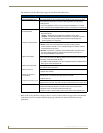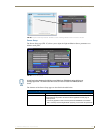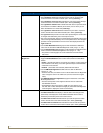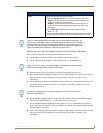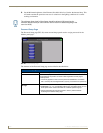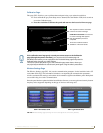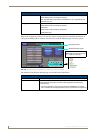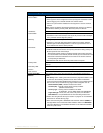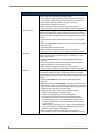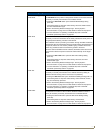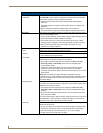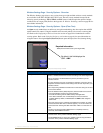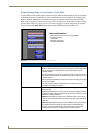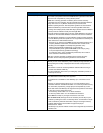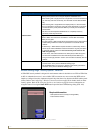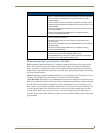
Firmware Pages and Descriptions
112
7" Modero Widescreen Touch Panels
Wireless Settings Page Elements (Cont.)
Wireless Security: Sets the wireless security method being used by the Modero panel to establish
communication with the network (via the target WAP).
• Touching any of the eight available connection method buttons launches a
new connection-specific dialog page which allows the user to define the
communication parameters specific to that type of connection.
• Some connection methods can be chosen
• Refer to the following Wireless Settings Page - Security Options -
Overview section on page 115 for further details on these security options.
Open (Clear Text) An Open security method does not utilize any encryption methodology but does
require that an SSID (alpha-numeric) be entered. This entry must match the
Network Name (SSID) entry of the target WAP because the panel must know
what device its using to bridge the communication gap between itself and the
network.
• Using this method causes network packets to be sent out as unencrypted
text.
• Pressing the Open (Clear Text) button opens the Open (Clear Text) Settings
dialog (FIG. 102).
• The following fields are required: SSID.
• Refer to the following Wireless Settings Page - Security Options -
Overview section on page 115 for further details on these security options.
Static WEP A Static WEP security method requires that both a target WAP be identified
and an encryption method be implemented prior to establishing an active
communication session.
• Pressing the Static WEP button opens the Static WEP Settings dialog
(FIG. 103).
• The following fields are required: SSID, Encryption method, Passphrase,
WEP Key assignment, and Authentication method.
• Refer to the following Wireless Settings Page - Security Options -
Overview section on page 115 for further details on these security options.
WPA-PSK A WPA-PSK security method is designed for environments where is it desirable
to use WPA or WPA2 but an 802.1x authentication server is not available.
PSK connections are more secure than WEP and are simpler to configure since
they implement dynamic keys but share a key between the WAP and the panel
(client).
• Pressing the WPA-PSK button opens the WPA-PSK Settings dialog
(FIG. 104).
• Although the button is labeled WPA-PSK, the encryption on the WAP could
either be WPA or WPA2. The firmware in the panel will connect to the access
point using the correct encryption automatically. The WPA encryption type is
configured in the access point, not in the firmware.
• WAPs do not show WPA or WPA2 on their configuration screens.
- WPA is normally displayed on an WAP as TKIP.
- WPA2 is normally displayed on an WAP as AES CCMP.
• The following fields are required: SSID and Password/Pass Phrase.
- The values that need to be entered are the SSID of the WAP and a
pass phrase that is a minimum of 8 characters and a maximum of 63.
- The exact same pass phrase including capitalization must be entered
in the access point.
- Whenever entering a password on any screen, touch the password field
to pop up the keyboard, press Clear to completely erase the previous
password, and then enter the new password.
• Refer to the following Wireless Settings Page - Security Options -
Overview section on page 115 for further details on these security options.



